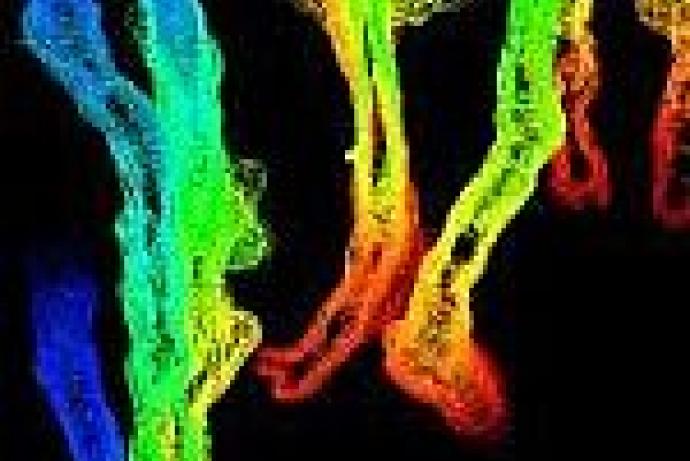Potential emetic liability of a new chemical entity (NCE) is currently identified in time consuming and costly experiments that can cause animal suffering. Preliminary evidence demonstrates the movement of the amoeba Dictyostelium can be used to identify potential emetic or aversive responses. Partners are sought who can supply NCEs from defined chemical series for which data on nausea and/or vomiting are available, ideally from both animal models and humans.
Professor Robin Williams partnered with GSK and St George's University of London, and with the Solutions funding awarded they validated a medium throughput screen for analysing bitter compounds using Dictyostelium, to replace the use of adverse in vivo testing of tastants and drugs in animal models.
Often, emetic liability of an NCE is only identified relatively late in pre-clinical development (e.g. during animal toxicology analysis) unless specific studies to detect or predict emesis in relevant animal models have been undertaken (Percie du Sert et al., 2012). Dogs and ferrets are the most frequently used species but non-human primates and rats are also used (Percie du Sert N et al., 2012; Holmes et al., 2009). These studies can involve a significant level of suffering and distress. In general, the animal models are predictive of emetic liability in humans although there are interspecies differences in dose-sensitivity that can make the choice of species for preclinical investigations difficult (Percie du Sert et al., 2012).
Advances in the current approach are urgently needed to predict emetic liability earlier in the pre-clinical phase without the need for studies involving animals. However, identifying a suitable simple non-sentient model system capable of identifying emetic liability of compounds in a scalable screen is challenging.
References
- Holmes AM, Rudd JA, Tattersall FD, et al. (2009). Opportunities for the replacement of animals in the study of nausea and vomiting. Br. J. Pharmacol. 157(6): 865-80. doi:10.1111/j.1476-5381.2009.00176.x.
- Percie du Sert N, Holmes AM, Wallis R, et al. (2012). Predicting the emetic liability of novel chemical entities: a comparative study. Br J Pharmacol 165(6): 1848-67. doi:10.1111/j.1476-5381.2011.01669.x.
Researchers at Royal Holloway have successfully explored the use of the simple biomedical model Dictyostelium as an early indicator of emetic potential. Dictyostelium is widely accepted in a range of biomedical research areas, including as a model for white blood cell movement and neuronal pharmacology and elucidating drug targets (Boeckeler et al., 2006; Williams et al., 2002). Studies have identified a range of compounds with known emetic effects that block Dictyostelium cell movement – the readout for the assay (Robery et al., 2011) and subsequent preliminary work has suggested novel curcumin analogues may be successfully predicted by this model. Thus, although the emetic mechanism by which many compounds and current drugs act is unknown, our model can identify characteristics related to their emetic potential.
This model would be used for early-stage screening for the emetic liability of NCEs. It is expected to reduce overall expenditure on animal experimentation, aid in compound selection and hence reduce compound attrition (especially at a late stage) due to nausea and vomiting.
References
- Boeckeler K, Adley K, Xu X, et al. (2006). The neuroprotective agent, valproic acid, regulates the mitogen-activated protein kinase pathway through modulation of protein kinase A signalling in Dictyostelium discoideum. Eur J Cell Biol 85(9-10): 1047-57. doi:10.1016/j.ejcb.2006.04.013.
- Robery S, Mukanowa J, Percie du Sert, et al. (2011). Investigating the Effect of Emetic Compounds on Chemotaxis in Dictyostelium Identifies a Non-Sentient Model for Bitter and Hot Tastant Research. PLoS One 6(9): e24439. doi:10.1371/journal.pone.0024439.
- Williams RS, Cheng L, Mudge AW, et al. (2002). A common mechanism of action for three mood-stabilizing drugs. Nature 417(6886): 292-5. doi:10.1038/417292a.
The team have expertise in the use of Dictyostelium as a model organism in several aspects of drug research and access to expertise in animal models of emesis. However, a partner is needed for two main reasons:
- To supply NCEs from defined chemical series and for which data on nausea and/or vomiting are available, ideally from both animal models (e.g. ferret or dog emesis, rat pica, CTA/CFA) and humans (healthy volunteers or patients). As the intent is to develop and validate a novel screen, NCEs not developed beyond first-in-human studies are suitable for inclusion.
- To provide advice and expertise on using the current assay in a pharmaceutical setting and developing the assay into a validated screen.
Funding arrangements and IP are subject to discussion.
Study of emetic liability involves animal experiments (primarily dog, ferret and sometimes rat and non-human primate) which can involve a significant level of suffering and distress due to the effects of inducing emesis e.g. reduced food intake, weight loss and dehydration. The development of a non-animal based screen will reduce the number of such experiments required and may also encourage other non-animal based approaches to early identification of emetic liability. It will also enable better selection of compounds for development so that the cascade of regulatory studies in animals which are required before human clinical trials are not conducted for drugs destined to fail in the clinic due to unacceptable levels of nausea and emesis.
Overview | Impact | Publication
Overview
Through the CRACK IT Solutions scheme, Professor Robin Williams has partnered with St George's Univeristy and GSK who will supply chemicals and corresponding human and animal concentration-response data regarding nausea, vomiting or taste aversion (bitter tastants). Using these compounds, this CRACK IT Solutions funded project will develop and validate the Dictyostelium as a model for reducing in vivo animal experimentation in the selection and development of novel chemical entities with reduced emetic liability and improved palatability.
Impact
The project successfully developed a medium throughput screen for analysing bitter compounds using Dictyostelium. Various physical behaviours of moving Dictyostelium, such as speed of movement, shape and protrusion number, were video recorded and analysed by computer-generated cell outlining. Analysis of the eight compounds, suggested by GSK, provided a range of potencies that were validated against bitter potency in established human, rat and electronic tongue models. The rank order for these substances in all models closely resembles data derived from Dictyostelium for seven of the compounds, suggesting that Dictyostelium may provide a suitable animal replacement model in bitter tastant perception.
The project has led to significant investment by GSK in funding a PhD Studentship to further investigate the use of Dictyostelium as a replacement model in bitter tastant research. The long term outcome for this project will be the reduction of adverse in vivo testing of tastants and drugs using animal models. The successful development and employment of Dictyostelium as a model will also likely reduce the development of compounds that will fail in late drug/food stuff development.
The team has further initiated a small experiment with Syngenta to examine one of their compounds using the Dictyostelium model and are currently exploring the possibility of engaging more industrial partners in validating the model further.
Publication
Cocorocchio M, Ives R, Clapham D, et al. (2016). Bitter Tastant Responses in the Amoeba Dictyostelium Correlate with Rat and Human Taste Assays. ALTEX 33(3), 225-236. doi:10.14573/altex.1509011.

